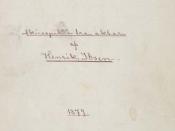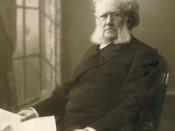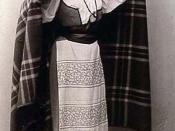Henrik IbsenÃÂs use of Christine Linde in "A DollÃÂs House" plays a crucial role in almost every aspect of the play. From the moment Christine Linde enters the stage, she proves to be an independent strong women through her use of language and her life experience. It is almost immediately established that Christine led a difficult life, having lost her husband and left to work hard and make her own money in order to support her sick mother and two younger brothers. Ibsen is extremely skillful with his use of Christine to parallel and contrast with Nora in their views of marriage and devotion to their families. Nora is seen as dependent, young and childish, where as Christine is portrayed as a mature, self-sufficient women able to make decisions for herself.
Christine also plays an essential part in the play for her ability to initiate many of the major events and ultimately, through her actions, is responsible for the unraveling of Nora and TorvaldÃÂs marriage at the end of the play.
NoraÃÂs strength to leave her husband showed her determination to prove herself as an individual. Her decision to end her marriage was due to ChristineÃÂs condescending attitude towards Nora, giving Nora the need to prove that she is capable of living her own life, without having to depend on others.
Christine Linde serves as a foil for the protagonist, Nora Helmer. Her traits and life experiences are in direct contrast to those of NoraÃÂs and therefore she is able to highlight NoraÃÂs own traits and experiences. For example, as NoraÃÂs marriage is being torn apart towards the end of the play, Christine and her former love, Nils Krogstad, are reuniting. The relationship between Christine and Krogstad is built up on need rather than appearances as Nora and TorvaldÃÂs...


